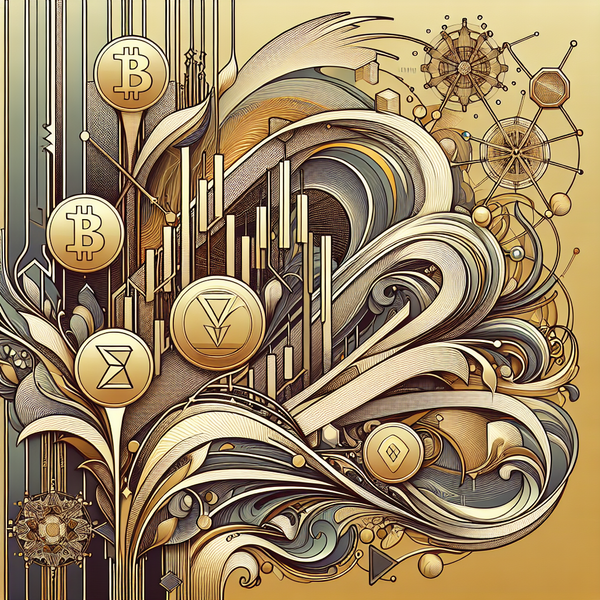Bear Market Bunkers: How Real-World Assets Thrive When Crypto Crashes

In the volatile world of cryptocurrency, the search for shelter during market downturns has led investors increasingly toward tokenized real-world assets (RWAs). But is this refuge backed by data, or merely wishful thinking? Let's dive into a data-driven analysis of how different RWA categories have performed during crypto bear markets and identify which ones truly serve as effective bear market bunkers.
The Resilience of RWAs in Crypto Winter
While the crypto market has experienced several significant downturns over the years, tokenized real-world assets have demonstrated remarkable resilience. According to market data, by December 2024, the tokenized RWA market (excluding stablecoins) grew by approximately 85% year-over-year to reach $15.2 billion, even amid broader market volatility.
This growth isn't merely coincidental. It reflects the fundamental nature of RWAs: they're backed by tangible assets whose values aren't entirely correlated with crypto market sentiment. As one crypto trader quipped to me recently, "When digital assets catch a cold, real-world assets might just sneeze." That dry humor masks a profound truth about asset correlation.
Outperforming the Market: Risk-Adjusted Returns
Perhaps the most compelling evidence for RWAs as bear market protection comes from risk-adjusted performance metrics. Recent data shows tokenized RWAs have outperformed Bitcoin and Ether in both absolute returns and volatility-adjusted terms during market downturns.
Consider these revealing statistics:
- RWA tokens gained 55.20% in May 2024 and rose 224.57% year-to-date
- Ondo Finance delivered a year-to-date gain of 461.62% through 2024
- The Sharpe ratio for Ondo Finance was 4.78, compared to Bitcoin's 1.37 and Ether's 1.36
These higher Sharpe ratios indicate that RWAs aren't just performing well—they're doing so with significantly less volatility, making them ideal candidates for bear market protection.
RWA Category Performance Rankings
Not all RWAs offer equal shelter during crypto storms. Let's examine how different categories have fared:
1. Tokenized Treasury Products: The Ultimate Safe Haven
Tokenized treasuries emerged as the star performers during market downturns. According to CoinGecko's RWA Report 2024, tokenized US treasuries saw an astonishing 782% increase in market cap during 2023's bear market, growing from $104 million to $917 million. Major providers like Franklin Templeton, Ondo Finance, and Mountain Protocol drew significant inflows as investors sought exposure to rising T-bill rates while keeping assets on-chain.
Why they work: Treasury-backed tokens provide the closest thing to risk-free yield in the crypto ecosystem, with returns anchored to US government debt rather than crypto market sentiment. Their correlation to crypto markets is minimal, making them ideal bear market shelters.
2. Commodity-Backed Tokens: The Gold Standard
Precious metals-backed tokens like Tether Gold (XAUT) and PAX Gold (PAXG) have demonstrated strong countercyclical properties during crypto downturns. These tokens, which represent 83% of the commodity-backed token market cap, offer exposure to gold's traditional role as an inflation hedge and safe haven asset.
Why they work: Gold has historically shown low or negative correlation with risk assets during crisis periods. When tokenized, this property transfers to the blockchain, offering protection while maintaining the liquidity and transferability benefits of cryptocurrency.
3. Stablecoins: The Baseline Protection
USD-pegged stablecoins remain the dominant form of RWAs, with tokens like USDT, USDC, and DAI accounting for 95% of the stablecoin market. While they don't offer upside potential, they provide essential capital preservation during market crashes.
Why they work: Stablecoins offer perfect downside protection (assuming they maintain their peg) with zero upside. They're the crypto equivalent of holding cash during a stock market crash—not exciting, but effective at preserving capital.
4. Private Credit and RWA Lending Protocols
On-chain private credit protocols like Goldfinch, Maple, and Centrifuge have shown mixed results during downturns. While they offer attractive yields backed by real-world lending, they've occasionally experienced defaults during severe market stress.
Why they're mixed: These protocols rely on underwriting quality and collateral management. Those with robust risk assessment frameworks have performed adequately during downturns, but those with weaker standards have suffered defaults, particularly following major market disruptions like the collapse of Luna, 3AC, and FTX.
Top-Performing RWA Protocols During Downturns
Based on comprehensive market data, these protocols have demonstrated the strongest bear market protection while maintaining upside potential:
- Ondo Finance ($ONDO): With a Sharpe ratio of 4.78 and year-to-date gains of 461.62% in 2024, Ondo has established itself as the premier treasury-focused RWA protocol. Their US Dollar Yield (USDY) product provides exposure to short-term US Treasury bills while maintaining the flexibility of on-chain assets.
- MANTRA Chain ($OM): According to data from Artemis Terminal, MANTRA was one of the top-performing RWAs during recent market volatility. Their focus on compliant financial services and staking has provided stability during market turbulence.
- RedBelly Network ($RBNT): With its focus on infrastructure for tokenizing real-world assets, RedBelly has demonstrated resilience during market downturns while capturing upside during recovery phases.
The RWA Sector's Overall Market Performance
The data speaks volumes: In early 2025, the Real-World Asset sector had the highest weighted average performance at 15.6%, significantly outperforming other crypto sectors during a period of market volatility. The sector's market capitalization grew to $53.03 billion from $49.26 billion, representing a net gain of $3.77 billion over just one month.
This outperformance didn't happen by accident. It reflects fundamental investor behavior during uncertain times: flight to quality and tangible value.
Actionable Strategies for Bear Market Protection
Based on this data-driven analysis, here are actionable strategies for using RWAs as bear market protection:
1. The Treasury Shield Strategy
Allocate 20-30% of your crypto portfolio to tokenized treasury products like Ondo Finance's USDY or Franklin Templeton's BENJI. These provide steady yield while maintaining on-chain exposure, allowing for quick redeployment when market conditions improve.
2. The Precious Metals Hedge
Include 10-15% allocation to gold-backed tokens like PAXG or XAUT. These historically perform well during inflationary periods and market stress, providing both downside protection and potential appreciation during economic uncertainty.
3. The RWA Protocol Direct Exposure
Consider a 5-10% allocation to the governance tokens of leading RWA protocols like $ONDO, $OM, or $RBNT. These offer potential appreciation from the growing adoption of RWAs while generally exhibiting lower correlation with broader crypto markets.
4. The Stablecoin Reserve
Maintain 20-25% in top-tier stablecoins (USDT, USDC, DAI) to provide liquidity for opportunities that arise during market bottoms. This dry powder approach ensures you can acquire assets at distressed prices without selling during downturns.
Conclusion: Data-Backed Bear Market Protection
The evidence is clear: tokenized real-world assets have demonstrated superior performance during crypto bear markets, with higher risk-adjusted returns and lower correlations to the broader crypto ecosystem. While no investment is entirely immune to market cycles, RWAs offer a data-backed approach to building resilience into crypto portfolios.
As we navigate the evolving landscape of digital assets, the integration of real-world value into blockchain ecosystems provides not just technological innovation, but practical investment solutions for the inherent volatility of cryptocurrency markets. Those seeking both downside protection and continued upside exposure would be wise to consider the growing universe of tokenized real-world assets.
And for those still skeptical, consider this: in a financial storm, would you rather be holding purely speculative tokens, or assets backed by treasuries, gold, and real-world cash flows? The data suggests the latter isn't just safer—it might be more profitable, too.




